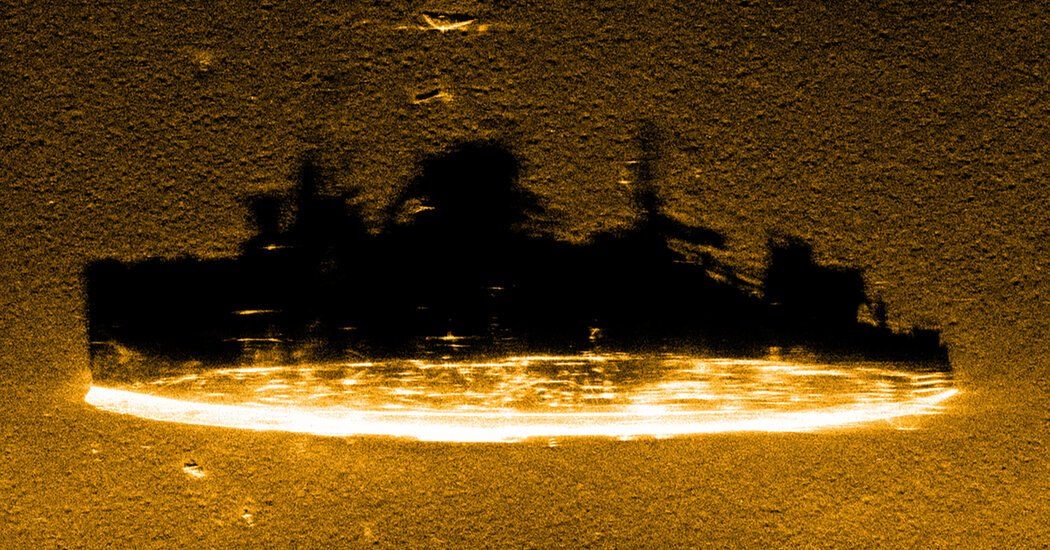The rediscovery of the vessel, which was captured by the Japanese for a time during World War II, highlights the potential of underwater autonomous vehicles to map the ocean floor.
On Aug. 1, a ship dropped its unusual cargo into a patch of ocean some 70 miles northwest of San Francisco: three orange robots, each more than 20 feet long and shaped like a torpedo. For a day, the aquatic drones autonomously prowled the waters, scanning nearly 50 square miles of ocean floor.
Some 3,500 feet beneath the surface, an apparition popped up on the robots’ powerful sonar. Down in the darkness, the drones saw a ghost.
The robots had spotted the wreck of the “Ghost Ship of the Pacific,” the only U.S. Navy destroyer captured by Japanese forces during World War II. Formerly known as either the U.S.S. Stewart, or DD-224, the ship was resting in what is now the Cordell Bank National Marine Sanctuary.
Three days later, another set of underwater robots captured images of the historic wreck. Though shrouded in decades of marine growth — and home to sponges and skittering crabs — the 314-foot-long destroyer is almost perfectly intact and upright on the seafloor.
“This level of preservation is exceptional for a vessel of its age and makes it potentially one of the best-preserved examples of a U.S. Navy ‘four-piper’ destroyer known to exist,” Maria Brown, superintendent of both the Cordell Bank and Greater Farallones national marine sanctuaries, said in a statement.
The find, which came during a technology demonstration, highlights the efficiency of modern robotic ocean exploration. Ocean Infinity, the marine robotics firm that operated the drones that made the discovery, owns the world’s largest fleet of autonomous underwater vehicles. The drones are used to create high-resolution maps of the seafloor — a major gap in our understanding of the oceans. The technology is also crucial for selecting sites for offshore construction projects such as wind farms and oil rigs, or for laying out routes for undersea pipelines and cables.
